I’ve been trying to find a plane to use for FPV R/C flying (First Person View) that is not among the ‘standards’ used by many people such as the Multiplex Twinstar or EasyStar. I have ordered ordered a few planes and I’ll cover them one by one as I get each one flyable and tested. The plane I’m covering today is the Guan Li Catalina. This plane is kind of a weird ‘cheap foam’ reproduction of the Great Planes PBY Catalina balsa model. For FPV stuff I don’t want to invest in high quality kits and components as the possibility of a crash is fairly high.
Here are the specifications, from the website, for what is included with the kit:
Manufacturer: Guan Li
Name: Catalina RC Seaplane
Wingspan: 1380mm (54.3″)
Length: 880mm (34.6″)
Weight: 780g(27.5 oz)
Motors: 2 x 2410-size 1200KV brushless motors
Speed Controller: 25A Brushless Speed Controller (actually included 2 x 20 Amp Brushless Speed Controllers)
Servos: 3x10g according to the Nitroplane specs. It actually has 4 servos, 1 rudder + 1 elevator + 2 ailerons)
Battery: 11.1V 15C 1500mAh Li-Poly w/Charger (Actually included a 11.1V 20C 1500mAh RFI Li-Poly Battery)
Battery Charger: Guan Li Li-Po Balancing Charger (this one overcharged the battery and caused it to get hot!)
Control System: 4 channel transmitter and receiver (these are short range junk)
Radio Control Range: 1000 feet (300m) (as I said short range junk)
Price: $129.95
The plane is advertised as “100% READY TO FLY!”, this is incorrect. Further down in the smaller print it says the plane is 90% completed, this is correct. The plane needs to be assembled, however it’s large modular components and this is not too difficult for most. You can’t just pull this out of the box and fly it, though, as the product page at Nitroplanes promotes on the top.
Assembly of the Guan Li Catalina
General
The plane major components went together without much difficulty. The instructions are very short on detail and quality and I believe this product would benefit with enhanced instructions. From a construction perspective I would suggest this kit for someone who has experience putting together ARF (Almost Ready to Fly) models as some knowledge is needed that is not imparted in the manual to get the best results and avoid possibly dangerous situations. I used foam safe CA on the construction instead of the ‘Foam Glue’ contact cement which was included with the kit.
Modifications
A lot of the assembly of the Guan Li Catalina is left up to your imagination. I mounted the motor onto the motor mount sticks and tested them with the speed controllers before gluing the nacelles together. I zip tied the brushless speed controllers and their amply long wires to the motor mount sticks. Once the nacelles are attached you will have a hard time accessing the internals of the engine pods (as seen in the photo below). Make sure that one motor is set for reverse rotation as there are 2 types of propellers included. One for clockwise rotation, and the other for counter-clockwise rotation. To change the direction of a brushless motor you swap any two of the three motor leads.
I plan on hand launching the Catalina so I did not install the outboard wing floats or the water rudder. The outboard floats are light and flimsy and would probably break off quickly on grass landings. I have seen a video on YouTube where they break off on a rough water landing.
I highly recommend that you use foam safe CA to secure the aileron control horns on to the ailerons. These horns are sloppy in the holes and I suspect you would loose adequate aileron control in just one or two flights, if not sooner.
I did not glue the center wing cover onto the wing. If you do, make sure to punch holes in the plastic sheet for the wing screws so that you will be able to take the wing off for transportation or repairs.
It is good practice with all models to test fit all the parts before actually applying any glue, you may find that you need to make some minor changes, sand or trim to get the pieces to fit properly; You do not want to find this out AFTER you have put glue on things.
Radio Installation
The radio included with the system is about standard quality for these low cost model kits. The advertised range is 1000 feet / 300 meters. For this type of plane with the size of motors included I feel this radio falls quite short of of being suitable for this model. I removed the stock receiver and replaced it with a Futaba R149DP full range PCM receiver. Control of the aircraft is now done through a Futaba 9CHP Super.
I used the servos included with the kit. They seem adequate and up to the job. The kit advertisement says that it comes with 3 servos. It actually included 4 of them; 2 for the ailerons, one for the elevator and one for the rudder. The air rudder has very limited range of motion and I feel it’s mostly included to control the attached water rudder more than anything. Actual usefulness of the air rudder in the air is not so good.
I set the control surfaces for high deflection values, and then configured the Futaba radio with 35% exponential on all of the surfaces. These settings worked out well in actual flight. The exponential setting results in smaller movements near the centers of the control sticks, with a higher movement out towards the edges to get full deflection if needed/desperate.
Note on the Brushless Motor Speed Controllers
The speed controllers are both the same type and model number but they had different throttle ranges. When connected through the included Y harness one motor would start well before the other motor, and the speeds of the motors were off by over 1000RPM. I removed the Y harness and connected one speed controller to Channel 3(the default throttle channel) and the other speed controller to Channel 5. Using a programmable mix in the radio I was able to make up for the difference in motor speeds at mid throttle. There is still a greater differences at higher throttles but with more time in the programming menus I will should be able to tune to within 100RPM throughout the throttle range.
NOTE: Someone posted to the comments on the YouTube video I posted that you can reset the speed controllers with a throttle stick sequence, and this will cause them to both track the throttle properly, totally avoiding the whole twin motor mixing scenario above. I wish I had found this information beforehand, but it worked out alright. You can find the documentation for the included brushless motor speed controllers online, but apparently not in the kit.
Note on Li-Poly Battery Charger
The included battery charger is (no surprise here) low-quality. It would be nice if it worked properly as it is a balance charger and would keep a first-time Li-Poly pilot from having to also buy a suitable charger. I bought several kits and have two of these chargers. After trying out the first one, I discovered that it did not stop charging the battery at the proper level, instead it overcharged the battery and caused it to get hot. This is a dangerous situation and could have resulted in a fire if it was not being closely watched. I would recommend that you DO NOT use the included charger, and instead buy a charger from a quality manufacturer. I use the ElectryFly Triton chargers (I have a Triton, and a Triton 2 EQ) and they work well and reliably, there are also many other good brands and models out there to choose from.
First and Second Flights
Taking Off
I flew the model for the first time today with the help of my friend Ollie for hand launching and taking the video of the flights. The plane is VERY WELL powered with the two included brushless motors and hand launching the aircraft proved to be no issue at all. Throttle up and throw it straight.
Flying
Average relaxing flight can be achieved at 1/3rd throttle and the plane flies fairly fast at full throttle. The plane is very light and due to the wind it did kick around a little bit in the air, but overall it handled surprisingly well. I was half expecting disaster, but it flew two flights reliably and predictably. Turning from upwind flight into downwind flight it was well behaved. Turning from downwind flight into upwind flight caused the inboard wing to dip quite a bit, but not uncontrollably. This can be seen in the included video below.
Landing
The wing of this plane has an under-cambered airfoil which can provide extra lift at lower airspeeds. This plane lands at very low speeds, but if you try to push it too slow, the wing will tip stall and fall off to one side. With this lightweight foam I would try to keep the speed up at least a little bit as a wingtip first landing could be disastrous to the Catalina.
Here’s a video of the flight so you can see what it looks like flying and what to expect. I would certainly not recommend flying in too much wind if the Catalina is your first or one of your first planes. It’s not really a good first plane, but I know with the prices it’s hard for some people to resist.
Guan Li Catalina test flight use this link if the embedded player does not work for you (right click it, then select ‘Open in New Tab’ or ‘Open in New Window’)
Summary
I was not expecting this to be a ‘high quality’ kit for US$129.95 and with everything included. However, I did suspect it would be a cheap airplane I could use for FPV projects and have a little fun with. With some modifications I believe it will be suitable for the purpose. I think if you have some airplane building and flying experience this would be a good kit to play with without a heavy investment. And if you’re looking for a first electric plane after playing with gliders or nitro models, this is certainly fun to fly and mess around with.
The amount of modeling knowledge required to make this plane fly well is somewhere in the intermediate range.
Positives:
Low Price
Everything included (motors, speed controls, servos, props, battery, charger)
Mostly pre-assembled, very easy to finalize the assembly with foam safe CA
Flies relatively well and predictably
Easy hand launches (do not plan to water launch, I wanted a ‘skid landing’ dual motor plane)
Lightweight
Plenty of extra power
Negatives:
The plane is not very durable to ‘adverse flight conditions’ such as bad landings, hard landings, etc. in short it’s fragile.
Included battery charger was defective, visible solder short on the board.
Included transmitter and receiver are very short range 1000 feet(300 meters) and are not suitable for large field flying.
Instructions are not as detailed as they should be
Specs on web site do not match the kit (the included components are better than specified, actually)
Ineffective rudder
This plane was purchased from NitroPlanes.com, you can see the specifications by clicking on the link (opens in new window)
If you’re new to FPV or just an experienced pilot looking for more information, check out my FPV Related Posts

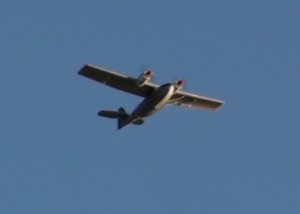
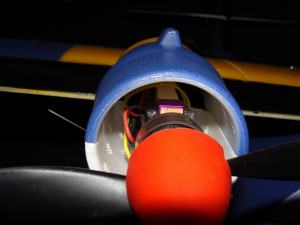
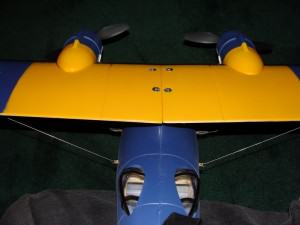
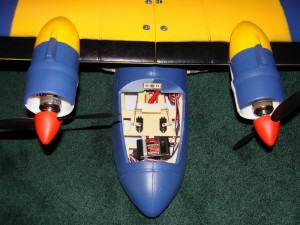
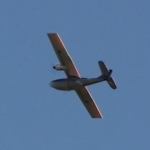
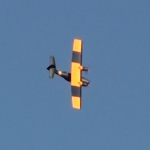
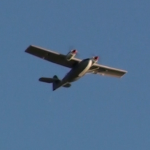
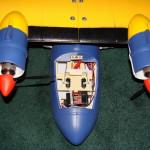
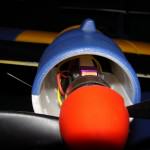
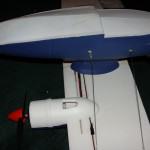
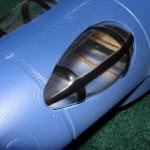
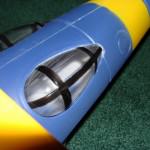
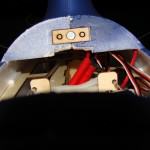
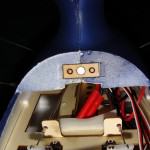
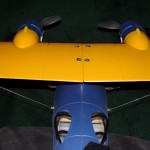
2 responses to FPV Plane Test 1 – Radio Controlled Catalina by Guan Li
Have 1 of these, does fly quite well, but not wthout problems.
Servos good but esc
s & esp receiver rubbish.s on wing struts seperated & on emergency landing wing twisted & tore off pylon. Fitted metal clevis`s & stronger struts & mountings, on 2nd flight went out of rc range in a small field, grounded again for new receiver.1st flight (little windy) plastic clevis
Since have had aileron fall off & 1 motor reverse in flight!.
Now extensively repaired & re-named “crashalina”.
On the plus, flys well & slows down nicely for very nice scale landings.
Hi Greg, sounds like my experience, though you seem to be a bit more hard-core about keeping it flying. The motor reverse in flight is nuts! Good luck with keeping it flying and don’t use the default receivers. They included a park-flyer radio with the plane which is limited to the 1000 foot range. Better just to go with one of the well known brands. Thanks for your response!
FPV Plane Test 1 – Radio Controlled Catalina by Guan Li 2 Trackbacks / Pingbacks
RC plane Wing Dragon with Flycamone on board Comment on FPV Plane Test 1 – Radio Controlled Catalina by Guan Li (April 15th, 2010 at 07:20)
[…] FPV Plane Test 1 – Guan Li Catalina | Jon’s Home Blog […]
Model Aircraft Comment on FPV Plane Test 1 – Radio Controlled Catalina by Guan Li (April 14th, 2010 at 23:57)
[…] is the original post: FPV Plane Test 1 – Guan Li Catalina | Jon's Home Blog […]
Leave a reply to FPV Plane Test 1 – Radio Controlled Catalina by Guan Li